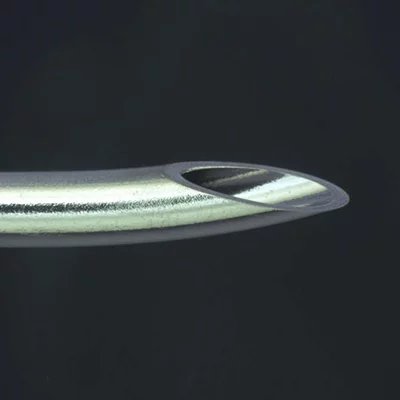What is Cannula? and Cannula original?
A cannula is a thin tube, typically made of metal, plastic, or silicone, that is inserted into the body for medical purposes. It is used to administer fluids, gases, or medications, or to withdraw samples from the body. Cannulas are often used in various medical procedures, such as intravenous (IV) infusion, respiratory support, or drainage of bodily fluids.
Types of Cannulas:
- Intravenous Cannula (IV Cannula): Used to deliver fluids or medications directly into the vein.
- Nasal Cannula: A device used to deliver oxygen to patients through the nose.
- Surgical Cannula: Used during surgeries to drain fluids or introduce instruments.
Origin of the Cannula:
The word “cannula” comes from the Latin word canna, meaning “tube” or “reed,” referring to the tube-like structure. The medical use of cannulas can be traced back to the 17th century when they were first used in surgeries and medical treatments, particularly in the field of bloodletting and intravenous procedures. Over time, advancements in medicine and technology improved the design and materials used for cannulas, making them safer and more effective for modern medical practices.
So, while the precise “origin” of the cannula is not tied to a single inventor or location, its use has evolved over centuries across various medical cultures.




What are the types of Cannula?
Cannulas come in various types, each designed for specific medical applications. They are typically made from materials like stainless steel, plastic, or silicone and are used in procedures ranging from intravenous (IV) therapy to cosmetic treatments. Below are the main types of cannulas, categorized based on their use and design:
1. Intravenous (IV) Cannula
- Purpose: Used to administer fluids, medications, or nutrients directly into the bloodstream.
- Common Use: Intravenous therapies, blood draws, or intravenous anesthesia.
- Design: Usually made of plastic or flexible materials, these cannulas have a sharp, beveled needle for insertion and a flexible tube to allow fluid flow.
- Types:
- Peripheral IV Cannula: Inserted into veins near the surface of the skin, commonly in the arms or hands.
- Central Venous Catheters (CVCs): A longer cannula inserted into larger veins (e.g., subclavian, jugular), often used for more long-term or intensive fluid delivery.
2. Nasal Cannula
- Purpose: Provides oxygen therapy by delivering a continuous flow of oxygen through the nostrils.
- Common Use: Used in patients who need oxygen supplementation, such as those with respiratory diseases (e.g., COPD).
- Design: Typically made of soft, flexible plastic tubing with two prongs that sit in the patient’s nostrils. The tubing is connected to an oxygen supply.
3. Arterial Cannula
- Purpose: Used for continuous blood pressure monitoring or arterial blood gas (ABG) sampling.
- Common Use: In critical care settings, such as during surgery, or for patients requiring close cardiovascular monitoring.
- Design: Inserted into an artery (often the radial, femoral, or brachial artery) to monitor blood pressure or take blood samples.
4. Surgical Cannula
- Purpose: Used during surgical procedures for the introduction of instruments or drainage of fluids.
- Common Use: In minimally invasive surgeries, such as laparoscopic or arthroscopic procedures, where the cannula serves as a portal for surgical tools or fluid removal.
- Design: These cannulas are often rigid and come in various sizes depending on the procedure, with some being equipped with a valve or trocar (a sharp instrument used to make an initial hole).
5. Micro Cannula
- Purpose: A very fine, flexible tube used in minimally invasive procedures.
- Common Use: Cosmetic procedures, such as dermal filler injections, fat transfer, or liposuction. It allows for precise, less traumatic injections or extractions.
- Design: The micro cannula is typically smaller than traditional cannulas, often less than 1 mm in diameter, and is designed to glide smoothly through tissues with minimal discomfort or bruising.
6. Ophthalmic Cannula
- Purpose: Specifically designed for use in eye surgeries.
- Common Use: Intraocular procedures, such as cataract surgery or retinal surgeries, where the cannula may be used to inject fluids or inject medication into the eye.
- Design: These cannulas are typically made of very thin, durable materials to prevent damage to the delicate eye tissues. They often have a very fine tip.
7. Endotracheal Cannula (ET Tube)
- Purpose: Used to secure an airway during surgery or in patients who cannot breathe independently.
- Common Use: In general anesthesia or emergency medical situations (e.g., during intubation).
- Design: A hollow tube that is inserted into the trachea through the mouth or nose to help maintain an open airway.
8. Drainage Cannula
- Purpose: Used to drain fluids from body cavities or wounds.
- Common Use: Post-surgical drainage, removal of fluid from a wound or abscess, or for draining excess cerebrospinal fluid (CSF) in cases like hydrocephalus.
- Design: Typically has multiple small holes or slits along its length to allow for the outflow of fluids. They can be flexible or rigid depending on the application.
9. Biopsy Cannula
- Purpose: Used to collect tissue samples for diagnostic purposes, such as a biopsy.
- Common Use: For procedures like lung, liver, or breast biopsies.
- Design: These cannulas may be hollow and may have a sharp or cutting edge to obtain a tissue sample for histopathological analysis.
10. Spinal or Epidural Cannula
- Purpose: Used to administer anesthesia into the epidural or spinal space, or for the withdrawal of cerebrospinal fluid (CSF).
- Common Use: Epidural anesthesia during childbirth or spine surgeries.
- Design: These cannulas are specially designed to be inserted into the spinal or epidural spaces with precision, often with a larger lumen to accommodate the flow of anesthetic agents.
11. Apheresis Cannula
- Purpose: Used for apheresis procedures, which involve the collection of blood components like plasma, platelets, or white blood cells.
- Common Use: In blood donation or in certain medical treatments (e.g., leukapheresis for cancer patients).
- Design: Apheresis cannulas are typically larger in diameter to facilitate the collection of blood at a high flow rate.
12. Liposuction Cannula
- Purpose: Used in cosmetic surgery to remove fat from a specific area of the body.
- Common Use: Liposuction procedures, where the cannula helps break down and aspirate fat cells.
- Design: Often rigid and with a small diameter, these cannulas are designed to be inserted through small incisions and can have multiple types of tips (e.g., blunt, sharp) depending on the procedure.
13. Insulin Cannula
- Purpose: Part of an insulin pump used in the treatment of diabetes.
- Common Use: Insulin delivery via an insulin pump, which is used by patients with diabetes to maintain consistent blood sugar levels.
- Design: Typically a soft, flexible plastic tube connected to the insulin pump, which delivers insulin subcutaneously.




ACMISAWA, is a scientific and technological innovation enterprise specialized in production on steel needles and Cannula with experience of more than 20 years, integrating R&D, production, sales and service, are availabe to serve you with best-quality.








